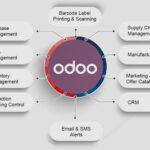- 1
Handle the conflict with an open mind
To manage employee conflict it is important to understand that people have different perceptions therefore getting on one single ground for you is necessary. There is a huge possibility which creates conflicts due to the lack of communication, lack of information and many more reasons. Proper concise and good communication will help you to ease both the number and the severity of conflicts. So always handle a conflict with an open mind.
- 2
Develop an Open Door Policy
It is better for the managers to create an environment of open communication so employees feel free to come to leadership with their matters. One way you can accelerate this is by creating an open-door policy. This policy should enhance employees to come to management about any matter of importance without fear of consequence. It includes asking questions, active listening and utilising teamwork. With this in place, employees will be more probable to reach out when there’s an issue, which can help to stop conflicts or keep them from growing further.
- 3
Find out points of disagreement
Find out points of disagreement and summarise those. Talk about where the line of disagreement comes and if there can be a compromise made. Don’t get hung up too much on disagreement unless it is against the project.
- 4
Understand the Severity of the Situation
When sorting out workplace conflict, it’s necessary to understand the nature and root cause of the conflict. Is it a matter of miscommunication, misinterpreted details, mismatched personalities, or competition among employees? Or is it a matter of more serious like harassment or discrimination? If it’s the prior, that’s an EEOC (Equal Employment Opportunity Commission) issue, and your company should already have policies and procedures in place to address it. If not, that should be an immediate priority.
Workplace conflict can occur for a lot of reasons, and actually conflict is inevitable. It’s essential to get to the root of the issue and understand the level of seriousness so you can determine how best to address it and block it from becoming a continuous problem.
- 5
Give attention to All Parties Involved
It’s necessary to hear each person who is involved in the conflict, present their side of the story without interference. It is important to actively listen, stay neutral, and aim on each person’s account. The focus here is for employees to truly listen to one another so they’ll have a greater comprehension of where the conflicting side is coming from. Often, employees will be more willing to come to a relaxing resolution once they feel recognized and heard. Try to keep other employees updated on situations when you work to listen carefully as you resolve conflict.
- 6
Improve teamwork.
As some conflict in the workplace is unavoidable, you can take steps to help reduce the likelihood of it turning into a problem. To help minimise conflict and motivate collaboration among team members, explain rules and expectations, evidently define roles, and encourage team-building activities.
- 7
Asses how things are going and determine preventive measures for the future
Never assume that the problem is resolute. Productive communication should influence business. Understanding this will help you make sure that the employees are functioning together to meet the organisational aims. So, continue to keep an eye on the issue and evaluate if the solution is productive. If the problem resurfaces, take necessary action.
Decide on preventative plans for the future. Some of them may not agree on every part, and this may be an issue. So, look for directions you can learn from the conflict and how you manage it. This will support you to know what you can do when the issue appears as well as allow you to grow and nurture your conflict management skills by training.
To conclude conflict is part of our day-to-day lives. Disagreement can occur with your family, friends, or coworkers. As these workplace conflicts are very common in each and every organisation it’s up to you, the way you choose to deal with these conflicts. Take suitable steps to stop and resolve employee conflicts. You may need to consult a third-party for assistance in some cases. The aim is to guarantee that the conflict has productive outcomes with minimal impact to your business.






